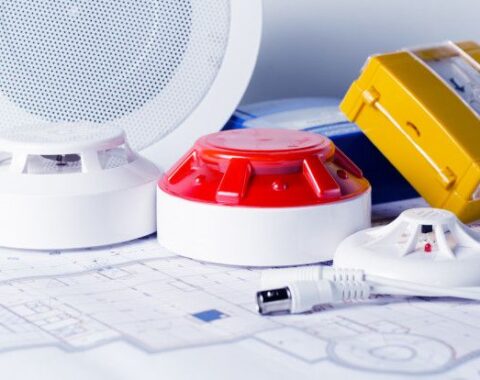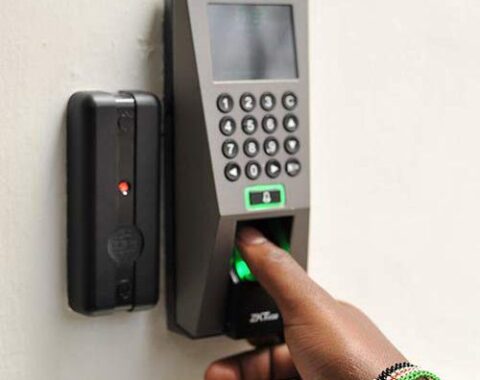Fire detectors and alarm systems are essential safety devices designed to detect fires early and alert individuals to take action, such as evacuating the building and calling emergency services. There are several types of detectors and alarm systems, each designed for specific environments and needs. Here’s an overview of key components:
Types of Fire Detectors:
Smoke Detectors:
Ionization Smoke Detectors: These detect smoke particles by ionizing the air in a sensing chamber. When smoke enters the chamber, it disrupts the ionization process, triggering the alarm. They are most effective at detecting fast-flaming fires.
Photoelectric Smoke Detectors: These use a light beam and sensor to detect smoke. When smoke enters the chamber, it scatters the light, triggering the alarm. They are more effective at detecting smoldering fires.
Heat Detectors:
Fixed-Temperature Heat Detectors: These trigger the alarm when the temperature exceeds a predetermined threshold (usually around 135°F or 57°C).
Rate-of-Rise Heat Detectors: These trigger when there is a rapid increase in temperature, even if the temperature doesn’t reach the set threshold.
Carbon Monoxide Detectors:
These detectors measure carbon monoxide levels in the air, which can result from a fire. They are often used in conjunction with smoke or heat detectors to provide additional early warnings.
Flame Detectors:
These use sensors to detect the specific light emitted by flames, such as ultraviolet (UV) or infrared (IR) radiation. They are typically used in industrial or hazardous environments where fast detection is critical.
Fire Alarm Components:
Control Panel:
The central hub of the fire alarm system, responsible for receiving signals from detectors and activating the alarm and other emergency systems.
Alarm Devices:
Sirens and Bells: Audible alarms that alert individuals to evacuate.
Visual Signals: Strobe lights or flashing lights that assist in alerting individuals who may have hearing impairments.
Manual Call Points:
Devices that allow individuals to manually activate the fire alarm, typically found near exits or in high-traffic areas.
Notification Appliances:
These include speakers or horns that broadcast voice instructions, helping guide people during evacuation.
Auxiliary Systems:
In larger or more complex installations, fire alarm systems can be connected to other systems like sprinklers, ventilation, or fire doors to automate safety measures during a fire event.
Fire Alarm Testing and Maintenance:
To ensure that fire detectors and alarms function properly, regular testing and maintenance are required. This includes:
Routine Inspections: Checking for proper installation, cleanliness, and functionality.
Testing Detectors: Ensuring that detectors are functioning by triggering them under controlled conditions.
Replacing Batteries: Many smoke detectors use batteries, which should be replaced regularly.
Servicing the Control Panel: Ensuring that the central alarm system is properly calibrated and operating correctly.
Fire detectors are an essential component of fire alarm systems. They work as the “sensing” part of the system, detecting the early signs of a fire (like smoke, heat, or gas) and alerting the alarm system to trigger an appropriate response. Here’s a breakdown of how fire detectors fit into the larger alarm system:
1. Detection
Smoke Detectors: They monitor the air for particles of smoke. When smoke enters the detector, it disrupts the sensing mechanism (either ionization or light scattering), triggering the alarm. Smoke detectors are typically used in residential and commercial settings.
Heat Detectors: These detectors respond to temperature changes caused by fire. If the temperature in the area exceeds a certain threshold (or if there’s a rapid increase), the detector signals the alarm system. Heat detectors are often used in areas where smoke detectors may give false alarms, such as kitchens.
Carbon Monoxide Detectors: These detect the presence of carbon monoxide (a dangerous gas produced during combustion). While not always part of a fire alarm system, they can be integrated for additional protection in environments at risk of fire and gas leaks.
Flame Detectors: These detectors are used to sense the light emitted by flames. They are highly sensitive and can detect fires almost immediately, which makes them useful in places where rapid fire detection is essential, such as industrial or hazardous locations.
2. Signal Transmission
Once a fire detector senses smoke, heat, or a flame, it sends a signal to the fire alarm control panel. This panel is the heart of the fire alarm system. The signal can be transmitted in different ways:
Wired systems: Detectors are physically wired to the control panel, and their signals are transmitted through the wiring.
Wireless systems: Detectors communicate wirelessly with the control panel using radio signals, which is common in smaller or harder-to-wire buildings.
3. Alarm Activation
Upon receiving the signal from the fire detectors, the fire alarm control panel processes the information and triggers the appropriate alarm devices, which can include:
Audible Alarms (Sirens or Bells): These emit loud sounds to warn people in the building to evacuate immediately.
Visual Signals (Flashing Lights or Strobes): These are used to alert individuals who may not be able to hear the audible alarms, such as people who are hearing impaired.
Voice Evacuation Systems: In larger buildings, the fire alarm may use a voice-based system to provide specific instructions, such as directing people to the nearest exits.
4. Evacuation and Emergency Response
The goal of the fire alarm system is to alert building occupants as quickly as possible so they can evacuate and take safety measures. In addition to the basic alarms, more advanced systems may also:
Activate sprinklers or other suppression systems.
Control ventilation to prevent smoke from spreading.
Unlock doors to help people exit safely.
5. Integration with Other Systems
Modern fire detection systems are often integrated with other building systems for improved safety. For example:
Sprinkler Systems: In many cases, fire detectors trigger automatic sprinkler systems to suppress the fire once it’s detected.
Fire Doors: Fire detectors can trigger fire doors to close, preventing the fire from spreading to other parts of the building.
Emergency Lighting: In the event of a fire, lights may be activated to guide people toward safe exits.
Example Scenario:
Smoke is Detected: A smoke detector in a building senses smoke particles in the air.
Signal is Sent: The detector sends a signal to the control panel.
Alarm is Triggered: The control panel activates an audible siren and flashing lights, signaling everyone to evacuate the building.
Safety Measures: If the system is connected, sprinklers might be activated, and fire doors might close to contain the fire.
Fire detectors are the critical first step in a fire alarm system, sensing the danger and notifying the system to take action. Without detectors, there would be no way to know when a fire has started, and the alarm system would have no way of knowing when to alert building occupants or activate safety measures. Fire detectors make the whole alarm system effective by providing the early warning that is essential for saving lives and minimizing property damage.



